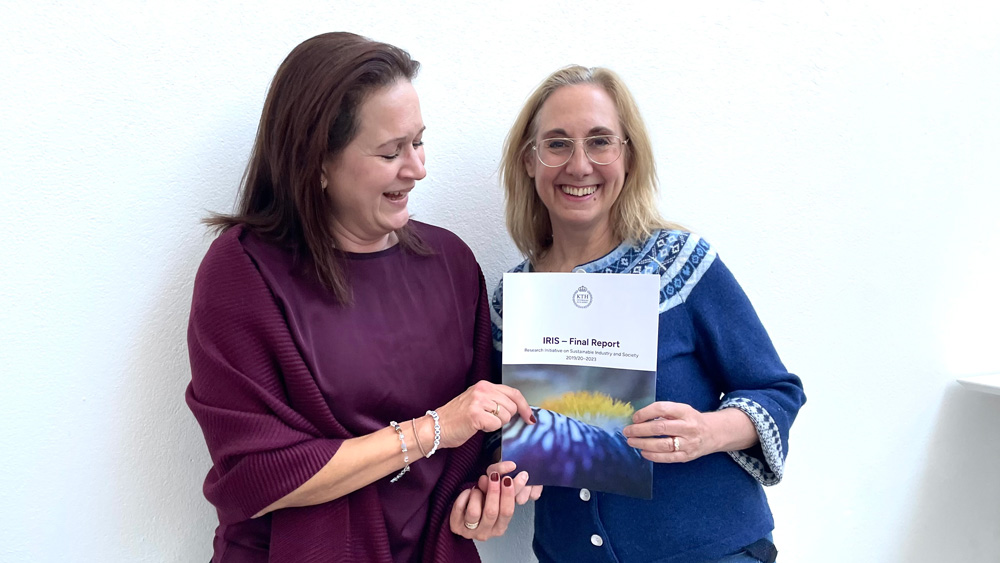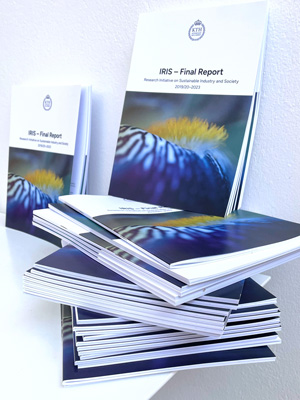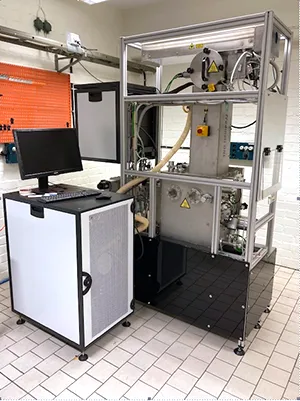How IRIS strengthened research at ITM

The IRIS research initiative at ITM resulted in cross-disciplinary collaborations and more than SEK 168 million in external funding. A final report, now being released, highlights the many outcomes of the investment.
Launched in 2019, IRIS (Research Initiative on Sustainable Industry and Society) set out to strengthen research environments at ITM and to stimulate new collaborations both within and beyond the school.
“The aim of the project was to contribute to sustainable development through advanced research, education and innovation. Now that the final report is complete, we can see that the initiative has been highly successful across all areas,” says Anna Jerbrant, project manager for IRIS.
“We are now world leaders in certain fields,” adds Martin Grimheden, Head of the Department of Machine Design and deputy project manager.
IRIS generated SEK 168.6 million in new funding for ITM, more than 155 published articles, and a wide range of internal and external collaborations. The research was carried out in four key areas:
- Industrial transformation through sustainable digitalization
- Integrated mechanics, components and materials design including additive manufacturing
- Sustainable energy systems, technology and business perspectives
- Innovation management, eco-systems and entrepreneurship.
A stronger school
Saman Nimali Gunasekara, coordinator for Area 3, believes IRIS has made ITM stronger as a whole:
“IRIS laid the foundation for strong and resilient collaborations in both research and education across ITM, and it has opened many doors for cross-institutional cooperation.”
Alongside the significant funding, publications and presentations generated by the project, she highlights new educational initiatives:
“One example is the doctoral course in sustainable energy conversion (FME3550), developed through collaboration between INDEK and EGI, which is now continuing beyond IRIS.”
See beyond the boundaries
Antonio Maffei, coordinator for Area 1, also emphasizes that IRIS was a truly unique initiative for KTH:
“What mattered most was that the project actually got researchers from very different backgrounds to start talking to each other and to launch new collaborations. We often work in our own silos, but IRIS gave us the opportunity and incentive to look beyond the boundaries of subjects and departments,” he says.
He points out that one concrete success in Area 1 was bringing together researchers in digitalization, sustainability, production and management around shared challenges.
“This not only led to new project applications and publications, but also to relationships that are now continuing in other initiatives.”
One of the challenges was finding a common language between such diverse disciplines:
“But that is exactly what made IRIS so valuable,” Maffei reflects. “It gave us time and space to develop an understanding of each other’s perspectives, and that is something I hope ITM can build on.”
Rings on the water
Jennie Björk, coordinator for Area 4, notes that the impact of IRIS will last long into the future:
“IRIS enabled us to work across internal boundaries. It allowed us to combine different perspectives and create something greater than the sum of its parts. The ability to come together around complex issues is one of the project’s most important achievements, and it has opened up opportunities to develop and explore new research areas jointly. It has made us better prepared to address complex societal challenges together.”
She continues:
“Even with colleagues we may not collaborate with directly in research, we have been able to exchange experiences and share ideas about how an academic organization like KTH can work in new ways, and about the barriers and enablers involved.”
In terms of external funding, Area 2 was the most successful, enabling important infrastructure investments, including an EBM (Electron-Beam Melting) printer.


